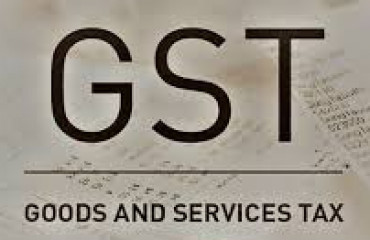
The E-invoice1 system, operational since October 2020, has facilitated the generation of over 631 crore e-invoices by 11.08 lakh taxpayers, with over 21 crore e-invoices generated monthly. The system, rolled out in phases, began with taxpayers having an annual aggregate turnover (AATO) over Rs. 500 crores and now includes those with AATO over Rs. 5 crores, extending to B2B and export invoices from August 1, 2023. GSTN expanded the number of e-invoice portals from one to six, incorporating private participation, with NIC launching the e-invoice2 portal in March 2023. Despite multiple portals, the e-invoice1 portal remains predominant for IRN generation. NIC has now introduced interoperable services between e-invoice1 and e-invoice2 portals, available for testing and set to go live on August 1, 2024. Key features include shared login credentials, unified API token usage for e-invoice and e-waybill services, and criss-cross operations for printing and cancellation of e-invoices across both portals. These services enable seamless switching between portals, ensuring uninterrupted e-invoice generation and high system availability, even during technical challenges. Detailed API-related features are available in the API documentation and sandbox websites of the e-invoice and e-waybill systems.
The E-invoice1 system, operational since October 2020, has facilitated the generation of over 631 crore e-invoices by 11.08 lakh taxpayers, with over 21 crore e-invoices generated monthly. The system, rolled out in phases, began with taxpayers having an annual aggregate turnover (AATO) over Rs. 500 crores and now includes those with AATO over Rs. 5 crores, extending to B2B and export invoices from August 1, 2023. GSTN expanded the number of e-invoice portals from one to six, incorporating private participation, with NIC launching the e-invoice2 portal in March 2023. Despite multiple portals, the e-invoice1 portal remains predominant for IRN generation. NIC has now introduced interoperable services between e-invoice1 and e-invoice2 portals, available for testing and set to go live on August 1, 2024. Key features include shared login credentials, unified API token usage for e-invoice and e-waybill services, and criss-cross operations for printing and cancellation of e-invoices across both portals. These services enable seamless switching between portals, ensuring uninterrupted e-invoice generation and high system availability, even during technical challenges. Detailed API-related features are available in the API documentation and sandbox websites of the e-invoice and e-waybill systems.
E-invoice Project
Interoperable services of E-Invoice1 and E-Invoice2 Systems
(Dated: 18.07.2024)
E-invoice1 system has been implemented from Oct 2020 throughout the country and it is running successfully for last three years and 9 months. More than 631 Crores of e-invoices have been generated by 11.08 Lakh tax payers during this period. More than 21 Crore e-invoices are generated during the month presently. The roll out of e-invoice has been made in phased manner starting with taxpayers with AATO more than Rs. 500 crores to taxpayers with AATO more than Rs. 5 Crores. From 01.08.2023, The government has notified for the e-invoice generation for B2B and Export categories of invoices for the tax payers with AATO more than Rs. 5 Crores.
Last year, GSTN has increased the number of portals for e-invoice generation, from one to six with private participation. NIC had started the e-invoice2 portal from NIC-Hyderabad along with the other e-invoice portals from March 2023. All these portals are running in parallel and serving the tax payers in generation of e-invoices. It has been observed that predominantly the tax payers are using the einvoice1 portal for the IRN generation.
NIC is happy to inform the tax payers that they have released these interoperable services of e-invoice1 and e-invoice2 portals on the sandbox environment for testing by the API and web users, and NIC will release these services on the production environment on 01.08.2024.
The highlights of these interoperable services of e-invoice portals are as follows:
- Both the portals provide the web and API modes for e-invoice related services.
- The tax payers and logistic operators can use the same login credentials to operate e-invoice 1 and e-invoice2 portals.
- In case of API, the same token can be used for the services of e-invoices and e-waybills on the both the portals.
- The tax payers can use the e-invoice2 portal during technical glitches in e-invoice main portal or any other exigencies.
- The Criss-Cross operations of printing, cancelling can be carried out on these portals. That is, printing and cancelling of e-invoices of the portal 1 can be done at portal 2 and vice versa.
- In case e-invoice main portal is non-operational because of technical reasons, the e-invoice2 can be used for all the services of the e-invoices.
These Interoperable Services help the tax payers to switch over from one portal to another portal seamlessly. This will help him to handle the cancellation and pulling of IRNs without switch over. This helps the tax payers to continue in generation of e-invoices during the technical challenges at the main site. This provides the high availability of the e-invoice system for the tax payers.
Pl refer to API document for API related interoperable features and sandbox web-sites of e-invoice and e-waybill systems
—
